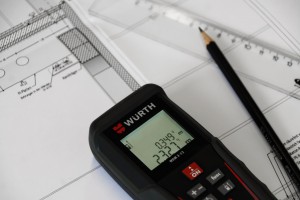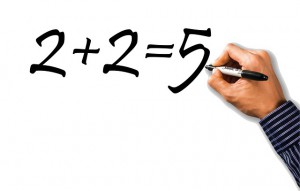You might have experience reconciling your checkbook by comparing your own written records with your bank statements.
Fortunately, in the 21st century, this exercise is a bit dated, for two reasons:
- Paper checks probably only account for a small amount of your total expenses per month
- You probably have an automatic record with your bank’s online services showing how much you paid for anything purchased with a debit card
This does not mean you can skip the account reconciliation though. In fact, the way instant payments and other conveniences work probably make it more important than ever to spend a few minutes per month reconciling your accounts.
What does it mean to reconcile?
 “Reconciling your accounts” generally means proving that your balances match what is expected. Back when paper checks were the norm, this would be comparing the paper ledger in your checkbook where you logged each check against your checking account bank statement.
“Reconciling your accounts” generally means proving that your balances match what is expected. Back when paper checks were the norm, this would be comparing the paper ledger in your checkbook where you logged each check against your checking account bank statement.
You could then compare outstanding checks versus pending payments to “Balance” your checkbook (meaning establish that everything is accounted for between your statement and checkbook).
Today, you do not need to write down every payment in a paper ledger, but you should regularly check the payments made in your online bank statement or transaction history.
Reconciling for the 21st century
Today you will still get paper receipts for almost every payment you make in person, and online copies of receipts for every purchase you make online.
There are still two factors that make reconciliation necessary:
Entry Errors at Storefronts
 The cheapest and easiest way for stores and restaurants to take credit and debit cards is by using a stand-alone card reader. These readers operate separately from the normal cash register system, meaning your waiter or clerk will enter your total separately from the system that scans or registered what you are buying.
The cheapest and easiest way for stores and restaurants to take credit and debit cards is by using a stand-alone card reader. These readers operate separately from the normal cash register system, meaning your waiter or clerk will enter your total separately from the system that scans or registered what you are buying.
You can tell which establishments do this because you will probably get two receipts – one issued by the establishment (listing what you bought and the items’ prices), and one printed by the card reader (usually just listing the total). Since these two items are registered separately, there is a chance that the person entering your totals copied down the wrong number, which means you actually pay the wrong amount.
You can see this immediately by comparing the two receipts, but you can also get a correction later by comparing your “true” receipt with your bank statement and bringing both to the establishment to prove the error. Of course, this is only possible if you kept the true receipt listing what you bought, how much you were supposed to pay, and the time stamps on both the receipt and the bank statement showing it was the same transaction.
Longer Processing Times
Just because you swipe your credit or debit card does not mean the payment processes that second. It is very common for online stores to use bulk payment processing, which means all payments process one or two days after the purchase was made. This can also happen with larger in-person stores (such as large grocery chains or gas stations) that may bulk-process orders.
While these may only have a one or two day waiting period, these can add up if you are checking your bank balance on the fly to figure out how much cash you have. These small “delayed” transactions can account for huge amounts of overdraft fees.
The much bigger processing delays can come from anything you might pay with a paper check (such as rent). These only processes after someone physically takes the check to a bank to deposit it, so the processing time is entirely up to whoever you pay. This can also happen with your paycheck – many payroll systems pay only when someone from your company’s payroll department confirms your pay amount, which means when you actually get the cash in your account will differ depending on weekends, holidays, and that person’s workload.
The 10 Minute Reconciliation
 Once a month, you should take 10 minutes to reconcile your checking account against what you think you spent. If you keep your receipts, this can go much faster (and as a bonus, you can file and organize your receipts at the same time, taking care of two items on your personal finance checklist).
Once a month, you should take 10 minutes to reconcile your checking account against what you think you spent. If you keep your receipts, this can go much faster (and as a bonus, you can file and organize your receipts at the same time, taking care of two items on your personal finance checklist).
- Step 1: Confirm your big purchases match your receipts
- Do this for your 10 biggest purchases of the month, just to make sure there were no errors
- Step 2: Make sure all your deposits are accounted for
- This makes sure when you see your final bank balances to figure out your “net worth”, you are getting an accurate number
- Step 3: Make sure your payments are accounted for
- Particularly larger payments, like the week’s grocery trip, or some gifts you bought online
- Step 4: Record your totals
- Once you have established your true bank balance, record this number in your spreadsheet for future reference. This helps you later determine how your spending is moving from month to month.
Pop Quiz
It appears that this quiz is not set up correctly.
